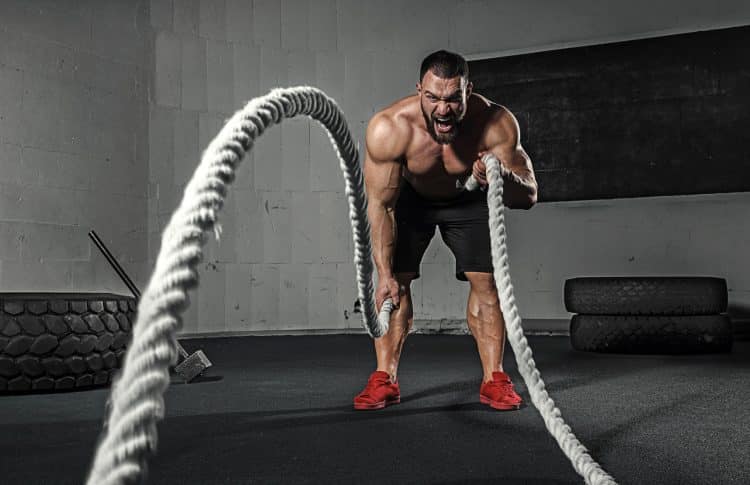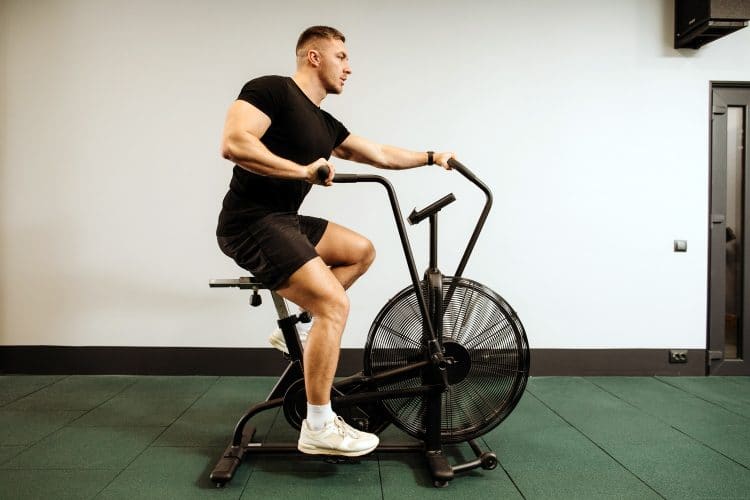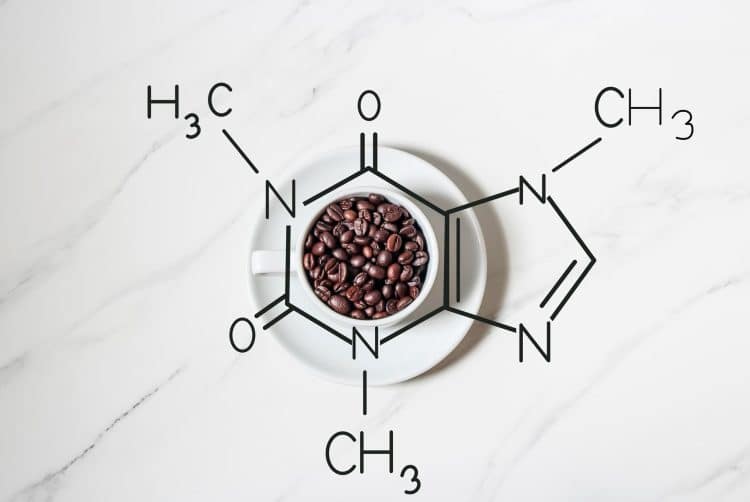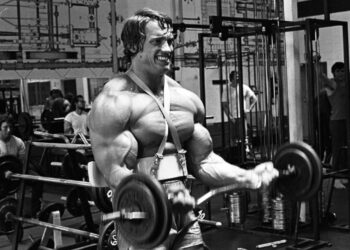If there were an award for the most misunderstood and misused words in the fitness sphere, it would go to stamina and endurance. These words are often used interchangeably. While stamina and endurance share similarities, there are differences between the two.
This article dives into these terms, their differences, their importance, and how you can improve your stamina and endurance to make the most of your workouts.
Stamina is your physical and mental ability to sustain an activity for a long duration at maximum or near maximum force. Endurance, on the other hand, refers to your physical capability to sustain an exercise for an extended period.
Endurance comprises two components — cardiovascular and muscular.
Cardiovascular endurance is your heart and lungs’ ability to fuel your body with oxygen. On the other hand, muscular endurance is your muscles’ ability to work without getting tired.
Let’s take squats as an example. If you have to perform one squat per second, your stamina will determine how many squats you can perform at a uniform rate. On the flip side, your endurance will dictate how many squats you can do before hitting muscle failure, regardless of rate and time.
Level Up Your Fitness: Join our 💪 strong community in Fitness Volt Newsletter. Get daily inspiration, expert-backed workouts, nutrition tips, the latest in strength sports, and the support you need to reach your goals. Subscribe for free!
In other words, while endurance is a component of your physical fitness, stamina is the end result. An improved cardiovascular and muscular endurance will help you perform better at physical tasks, resulting in enhanced mental and physical stamina.
Stamina vs. Endurance
When talking about stamina, most people refer to their ability to complete a physical task without getting tired or fatigued. For example, for a runner, their stamina might mean their ability to complete a 200-meter race without a dip in their performance.
Physical performance has five components:
- Cardiovascular endurance
- Muscular endurance
- Muscular strength
- Body composition
- Flexibility
Cardiovascular and muscular endurance can improve your overall physical performance. They can also influence the other three physical performance parameters.
Stamina vs. Endurance — Test
Let’s say you’re a beginner and have no idea about your stamina or endurance. We’ll go over a simple example to better explain the concept of stamina and endurance.
Let’s assume you feel lethargic and tired throughout the day. You join a gym, and your trainer puts you through a 12-week training program. At the end of the 12 weeks, you notice:
- You have more energy to get through the day. This signals improved stamina.
- You can complete a 5K run in lesser time than when you started the 12-week program. This shows better endurance.
Importance of Stamina
Here are the benefits of training for stamina:
1. Improves Explosive Performance
Training for stamina helps you build explosive strength, and you’ll improve at activities that require a few bursts of max or near-max effort.
2. Activities Feel Less Taxing
As your stamina improves, your routine activities will start feeling less taxing. For example, the 100-meter sprint will not feel as exhausting as it did when you started running.
3. Better at Burning Fat
Stamina training is an anaerobic activity, meaning it uses stored fat as an energy source instead of oxygen, making it more effective at burning fat than endurance training, which is an aerobic form of training.
Training For Better Stamina
Since stamina refers to your physical and mental ability to sustain an activity for a long duration at maximum or near maximum force, the most optimal way to improve your stamina would be to train for failure.
Your stamina is best tested when you’re required to perform a task at full capacity for a short duration. For example, a basketball player dashes for a dunk after receiving a pass.
To improve your stamina, you need to train beyond the point where your body can deliver enough oxygen to muscles to sustain the task. This will lead to muscle failure. However, it doesn’t end here. You need to allow your body enough recovery time to build better stamina. Your diet also plays a vital role in the recovery process.
With time, your body will be able to handle more of the demand of maximum exertion the next time, resulting in improved performance for longer.
How To Improve Stamina
To build stamina, you should focus on tasks that approach maximum exertion and muscle failure, including:
- AMRAP (As Many Reps As Possible): Resistance or bodyweight exercises performed to failure.
- Heavy Weightlifting: If you’re a strength athlete, lifting close to your 1RM (one-rep max) for multiple reps can help build endurance.
- Sprint Intervals: You should run at maximum speed to build endurance.
In each of the three techniques, use progressive overload techniques like increasing volume, intensity, frequency, and time as you get better to increase muscle exertion.
Based on your preferred physical activity and your immediate goals, you can incorporate one or two of the above-mentioned strategies into your training routine two to three times a week for improved endurance.
Importance of Endurance
Endurance primarily helps delay the onset of fatigue. While stamina too helps achieve this feat, endurance is better at improving your performance at a task where you’re not bound by a timer.
Here are the advantages of endurance training:
1. Improves Cardiovascular Endurance
Endurance training is a must for runners, especially distance runners. Runners with good endurance can run for longer and at a steady pace before seeing a dip in their performance than runners who focus on stamina.
Level Up Your Fitness: Join our 💪 strong community in Fitness Volt Newsletter. Get daily inspiration, expert-backed workouts, nutrition tips, the latest in strength sports, and the support you need to reach your goals. Subscribe for free!
2. Improves Muscular Endurance
Muscle endurance also allows you to perform exercises for longer. Furthermore, this is more evident in exercises like the plank, farmer’s carry, etc., where you need to focus on improving your time under tension.
Training For Better Endurance
Unlike stamina training, the objective of endurance training is to perform an activity for an extended period and not necessarily overexert yourself. To train for endurance, you need to focus on your pace.
For example, you should be able to maintain the same pace throughout a 200-meter run. Furthermore, instead of hitting failure on the bench press with 315 pounds for 10 reps, you should focus on performing 20 reps with 225 pounds.
Your goal with endurance training is to experience the same exertion throughout the physical activity. With time, your fatigue threshold will increase, and you’ll be able to do more for longer.
How To Improve Endurance
Unlike boosting your stamina, you don’t need high-intensity training techniques if your goal is to improve your endurance. To enhance your endurance, you should focus on adding low-intensity training to your training regimen for longer durations. Here are some ways to increase your endurance:
- Long-Distance Cardio: Since endurance is vital for long-distance runners, long-distance cardio is a no-brainer in endurance programming.
- High-Volume Strength Training: In an endurance-enhancing routine, you should focus on performing a higher number of sets and reps with relatively lighter weights.
- LISS Cardio: Low-intensity steady-state cardio is the name of the game in endurance-boosting routines. Add a 30-45 minute LISS cardio session into your routine.
As you get better, increase the time, distance, and frequency of your endurance workouts to supercharge your gains. Notably, endurance-boosting workouts are relatively safer than volume and intensity-pushing stamina workouts.
More Tips To Improve Stamina and Endurance
Outside the endurance and stamina tips mentioned above, here are some other ways to help boost your physical performance:
1. Use Caffeine
A 2001 study found that caffeine helped athletes train at more significant power output and for an extended duration. Furthermore, it found that caffeine could increase speed and power output in simulated race conditions, but for 60 seconds to 2 hours. [1]
Notably, you should not go overboard with caffeine and should limit your daily caffeine intake to less than 400g. Furthermore, avoid caffeine close to bedtime.
2. Progressive Overload
Whether you want to improve your endurance or stamina, you should use progressive overload principles in your training regimen to boost your performance and results.
Increase your training intensity, volume, and frequency, or incorporate advanced training principles like dropsets, supersets, and intraset stretching into your resistance training routines for improved results.
3. More than 150 Minutes of Exercise Per Week
The American Health Organization recommends doing at least 150 minutes of aerobic exercise per week to strengthen your heart and lungs. This translates to 25 minutes of aerobic exercise six days a week.
4. Find Your Perfect Heart Rate
During your endurance workouts, your target heart rate should be between 50 to 70 percent of your max heart rate. On the flip side, your target heart rate should be 70 to 85 percent of your max heart rate for high-intensity stamina-focused workouts.
5. Try HIIT Training
Although an anaerobic form of exercise, high-intensity interval training is great for both stamina and endurance-focused workouts. Keep your HIIT workouts short, intense, and explosive to make the most of this training routine.
6. Stay Hydrated
Since stamina and endurance training workouts require long practice hours, you should ensure you are adequately hydrated. Drink at least a gallon of water daily to ensure you are not dehydrated.
7. Recovery
You’ll not see optimal results from your training if you don’t give your muscles enough time to rest and recuperate between workouts. You should get between seven to eight hours of eye-shut time every night to streamline your recovery.
Additionally, your diet plays a crucial role in your recovery process. Eat a macro-focused diet to get in shape or undergo body recomposition.
How Long Before You Can See Results
Building stamina and endurance take time. It will test your patience, determination, and grit. Nonetheless, you should be able to see desired results within two to three months with consistent training.
Ensure that you’re using progressive overload protocols to make constant gains. Sticking to the same intensity, volume, and frequency could lead you to a plateau. Remember: It is always easier to avoid hitting an overhead ceiling than breaking through one.
Frequently Asked Questions
Who should train for stamina?
Sprinting, tennis, basketball, baseball, and American football are some of the most popular sports that require stamina. If your sport requires short bursts of explosive energy, you should train for improved stamina.
Who should train for endurance?
Marathon and soccer athletes should train for endurance as their sports require them to be on the move for a prolonged period.
Can I improve my stamina and endurance at the same time?
Yes, you could boost your endurance and stamina by performing regular aerobic workouts. As mentioned in the article, endurance is a component of physical fitness, while stamina is the end result of your physical fitness.
Wrapping Up
Although stamina and endurance are often used interchangeably, they serve different purposes. Stamina is your ability to sustain an activity for a long duration at maximum force, whereas endurance refers to your physical capability to sustain an exercise for an extended period.
Stamina and endurance can be improved by regular aerobic exercise. Furthermore, HIIT exercise can help improve your physical performance. We hope this article helped clear your doubts about endurance and stamina. Let us know in the comments below if you have any questions.
References
- Graham TE. Caffeine and exercise: metabolism, endurance, and performance. Sports Med. 2001;31(11):785-807. doi: 10.2165/00007256-200131110-00002. PMID: 11583104.













